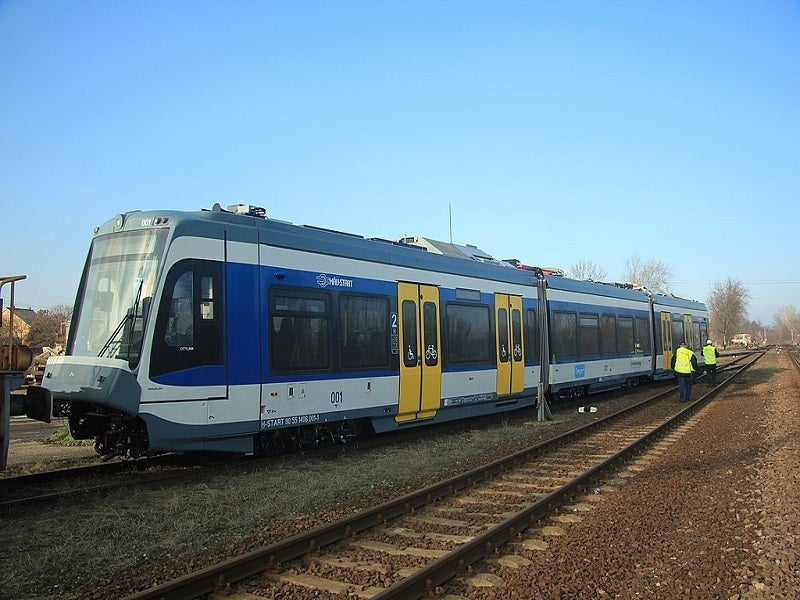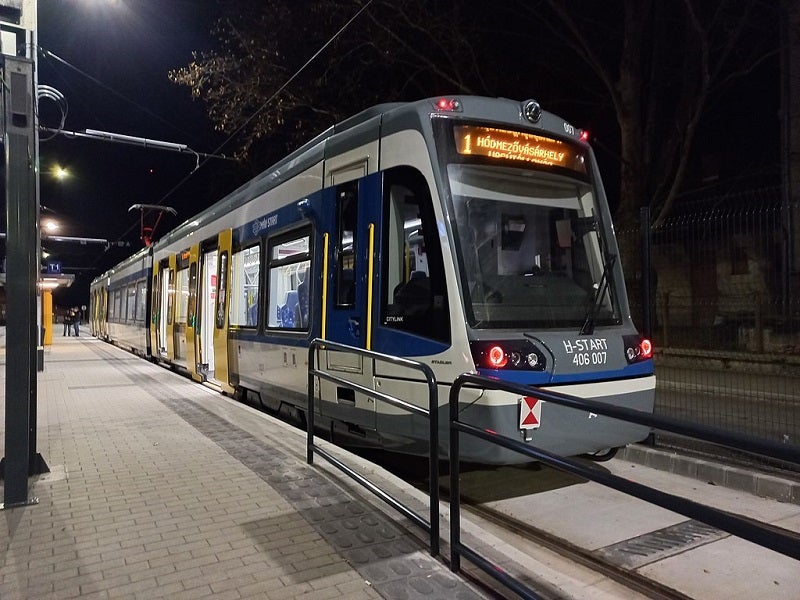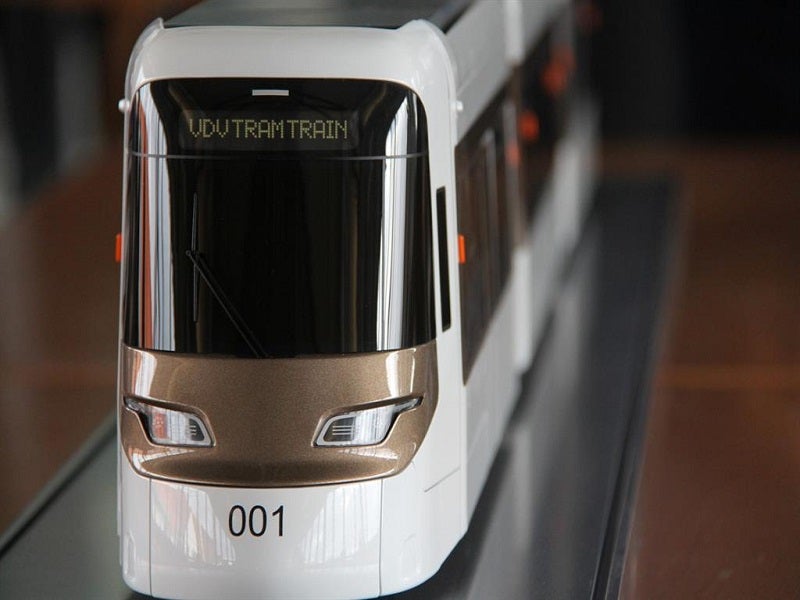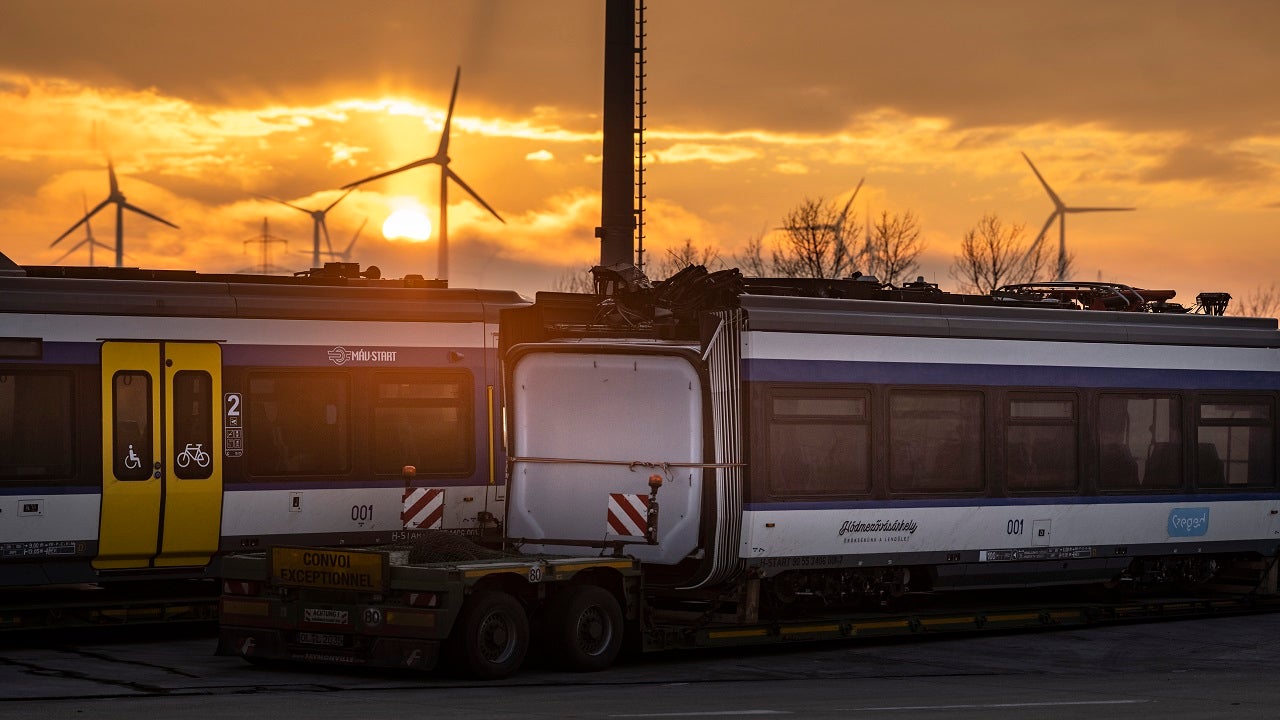Citylink is a series of tram-trains designed to be programmed as an urban tram or an intercity train.
Manufactured by Swiss railway rolling stock manufacturer Stadler, at its facility in Valencia, Spain, the Citylink family of light-rail vehicles are barrier-free and low-floor units. The trains are designed to provide passengers with safe and comfortable journeys.
Designed for both metre gauge and standard gauge networks, Citylink is operational in the UK, Spain, and Germany. Hungary is the latest customer of the tram-train. The first Citylink train entered service on the Alicante network in Spain in 2003.
Stadler Citylink operations and route
The Citylink light rail vehicle (LRV) currently operates in Karlsruhe and Chemnitz in Germany, Alicante in Spain, Sheffield in the UK, Puebla in Mexico, and on the Szeged and Hódmezővásárhely tram networks in Hungary.
The new tram-trains are Hungary’s first tram-trains. The Citylink will also enter service with the South Wales Metro in 2022.
Design and features of the Stadler Citylink tram-trains
The barrier-free tram type Citylink has a low-floor configuration throughout the length of the vehicle. It is designed to provide improved acoustic insulation while ensuring a smooth and quiet operation.
Citylink LRVs are bi-directional and bi-mode vehicles designed with a modern passenger information system, air conditioning, a bright and comfortable interior, and an advanced onboard surveillance CCTV camera system.
Citylink enables easy access for different platform heights. It has four double-leaf doors on each side which can be placed at different heights. The windows of the tram-train are designed to provide passengers with panoramic views.
The bi-directional light rail vehicles can be used for both train and tramway operations at speeds of up to 100km/h.
In Hungary, the vehicles will travel on the Szeged-Hódmezővásárhely tramway lines at a maximum speed of 50km/h while the operations on the open line between the two cities will be diesel-powered at a permitted speed of 100km/h. The speeds differ to comply with the traffic regulations in the region.
The vehicles can run on 750V DC overhead voltage on the tram networks and 25kV AC overhead voltage mainline railway network in the UK. In Hungary, the 37m-long, 2.6m-wide, and 3.8m-high LRVs will operate on 600V DC overhead in diesel mode, on the railway line connecting Szeged and Hódmezövásárhely, and in electric mode on the tram networks.
The dual-voltage vehicles were built in compliance with the latest safety requirements of European standards EN 12663 P-III and EN 15227 C-III.
Seating capacity and other amenities on the Stadler Citylink
The new tram-trains have a seating capacity to accommodate 216 passengers, including 92 in 76 fixed seats, and 16 in folding seats. The seating configuration allows four passengers per 1m².
The vehicles features amenities such as spaces for wheelchair users, multi-functional spaces, and room for either eight bicycles or four prams.
The trains are equipped with Wi-Fi connectivity and USB connectors for charging mobile phones and laptops.
Second-generation Citylink vehicles
The second-generation three-car configuration Citylink vehicles will have a length of 37.5m and can accommodate 236 passengers. They will be fully-electric vehicles, with a drive power of 900kW and a maximum operating speed of 100km/h.
The modern trains are designed as fully stepless vehicles and are equipped with a dynamic passenger information system (FIS) and a radio-controlled blind information system (BLIS) to enhance passenger experience.
The trams can run on 600/750V DC voltage on the tram networks in the city area, or on 15,000V AC voltage railway power in the surrounding area.
Orders and deliveries of the Stadler Citylink tram-train
The first order for Citylink vehicles was placed by Spanish railway company Ferrocarriles de la Generalitat Valenciana for the Alicante network.
Stadler received an order from the South Yorkshire Passenger Transport Executive (SYPTE) to deliver seven Citylink trains to operate on the UK’s first train-tram system in June 2013. The trains cover the Supertram network, and the national rail network between Sheffield and Rotherham. Stadler will deliver 36 three-car Citylink tram-trains for the Wales region under a contract with railway franchise Wales and Borders.
Germany’s Verkehrsverbund Mittelsachsen (VMS) reached a deal for eight hybrid tram trains for the Chemnitzer Modell railway project, that connects the Chemnitz tram line with the commuter rail network, in August 2012. It ordered four more Citylink units in July 2015 for the second phase of the project.
VMS placed another order for 19 additional vehicles for the Chemnitz railway in March 2022, with an option for a further 27 vehicles. The trains under the new order are expected to enter service from Summer 2026.
VMS will receive new, second generation trains in three-car bi-directional configuration.
It secured a financing package worth €189m ($208m) from a consortium of the European Investment Bank (EIB), KfW IPEX-Bank, and NORD/LB to expand its fleet and maintenance capacity. EIB is contributing €89m ($98m) while KfW IPEX-Bank and NORD/LB agreed to provide €50m ($55m) each.
Hungarian passenger service operator MÁV-START and Stadler signed a contract for the supply of eight trams in May 2017. The contract also includes an option for four additional units. The bi-directional diesel-electric hybrid tram-trains link the tram systems of Szeged and Hódmezövásárhely, without transhipments.
The first Citylink tram-train prototype was delivered to MÁV-START in Hungary in January 2021. The second Citylink tram-train was delivered in March 2021, followed by the third in April 2021.
A German-Austrian project consortium ordered Stadler to deliver 504 tram-trains, worth €4bn, ($5bn) as part of the VDV Tram-Train project in January 2022. The agreement also includes the provision of maintenance services for up to 32 years.
The project consortium comprises six transport companies, namely Saarbahn Netz, Verkehrsbetriebe Karlsruhe (VBK), Schiene Oberösterreich, Albtal-Verkehrs-Gesellschaft (AVG), the Austrian State of Salzburg, and Zweckverband Regional-Stadtbahn Neckar-Alb.
The framework contract includes a fixed component of 246 Citylink vehicles, worth approximately €1.7bn ($1.9bn), and an option for 258 additional vehicles.
Stadler is expected to deliver 246 Citylink vehicles to the consortium over the next ten years. The company will deliver the first four units to Saarbahn as pre-production vehicles in 2024.
Saarbahn plans to operate 28 of the new tram-trains in Saarbrücken, and on routes connecting Lebach and Saargemünd by 2027. It will receive 24 additional tram-trains to replace existing vehicles beginning in 2025, upon completion of the delivery of the first four vehicles. Saarbahn has an option to procure 21 additional tram-trains.
The initial 28 vehicles will be funded by Helaba Landesbank Hessen-Thüringen, with a financing package worth €140m ($157.94m).











